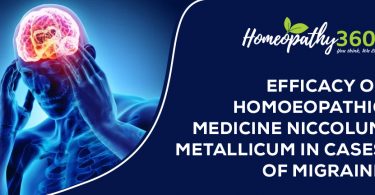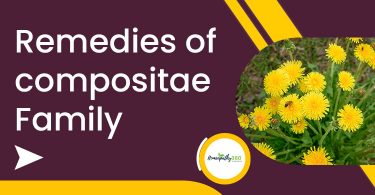
Abstract:
Being one among the biggest global burden, known as the ‘silent killer’, hypertension is affecting the lives of many individuals. Hypertension is the attributable cause for 57% of stroke and 24% of coronary heart disease deaths in India. This article emphasises on homoeopathic therapeutics in managing the condition, with reference to few rubrics, and their indications.
KEYWORDS: Hypertension, homoeopathy
ABBREVIATIONS: HTN- hypertension, ESRD- end stage renal disease, BP- blood pressure
INTRODUCTION:
Hypertension can be defined clinically as Clinically, as that level of blood pressure at which the institution of therapy reduces blood pressure– related morbidity and mortality. A blood pressure reading less than or equal to 120/80 mm Hg is considered as the normal blood pressure range.
Blood pressure is said to be elevated when systolic is 120-129 mmHg and diastolic is < 80mmHg. Hypertension can be classified in adults as stage1, when systole is 130-139 mmHg or diastole is 80-89 mmHg. Stage 2 hypertension refers to a reading of systolic >/= 140 mmHg or diastolic >90 mmHg.
Homoeopathy has a many remedial indications for hypertension according to the causative factors, the pathophysiological changes, and upon the presenting signs and symptoms. Through Homoeopathy and with life style changes, hypertension can be managed, further preventing the life-threatening complications.
PATHOPHYSIOLOGY OF HYPERTENSION
Depending upon the cause its divided into two main types: Essential/ primary HTN and Secondary HTN. HTN is the result of either increased cardiac output and/or increased peripheral resistance. The mechanisms involved are: changes in Intravascular volume, overactivity of Autonomic nervous system, Renin – angiotensin- aldosterone overactivity, changes in Vascular mechanism, Immune mechanism, inflammation and oxidative stress. Where as in secondary HTN the causes has an underlying disease conditions.
Both environmental and genetic factors may contribute to variations in hypertension prevalence. Obesity and weight gain are strong, independent risk factors for hypertension. Salt(sodium chloride), Alcohol consumption, smoking, psychosocial stress, and low levels of physical activity also may contribute to hypertension.
CLINICAL FEATURES AND COMPLICATIONS
The clinical and laboratory findings are mainly referable to
involvement of the target organs: heart, brain, kidneys, eyes, and peripheral arteries.
Usually Asymptomatic (primary HTN) can be presented as Headache, Somnolence, confusion, visual disturbances, nausea/vomiting.
As it’s called the ‘silent killer’ it has many life-threatening complications especially on heart resulting in structural and functional adaptations leading to left ventricular hypertrophy, increased atrial size, CHF, atherosclerotic coronary artery disease, microvascular disease, and cardiac arrhythmias. Elevated blood pressure is the strongest risk factor for stroke. A risk factor for renal injury and ESRD. In peripheral vessels causing arterial stiffness and remodeling.
HOMOEOPATHIC APPROACH
Based upon the causative factor and totality, the well indicated homoeopathic similimum can be given to the patient in management of HTN and also avoiding the further complications. A regular BP monitoring, observing for changes in signs and symptoms if present earlier, specific investigations in complicated cases, is required to know the prognosis, as well as the action of the remedy.
Using various rubrics mentioned in Homoeopathic repertory for HTN, there are many therapeutic indications as follows:
1.CRATEGUS
Arteriosclerosis, said to have a solvent power upon crustaceous, calcareous deposits in. High arterial tension. Act’s on muscle of heart, a heart tonic. heart and pulse: irregularity of heart with very feeble, accelerated, pulse, odema. Acts as a sedative in irritable patients with cardiac symptoms. giddiness, air hunger and reduction in BP. Excessive sweat better by rest & quite worse by warm room Incompetent valves, cardiac dilatation.
2.Picric acid
Scanty urine, anuria Inflammation of kidneys with profound weakness. Dementia with prostration, must lie down Pulse slow, small, feeble. Causation- any mental exertion, fatigue
3.Plumbum met
General sclerotic condition. Sphere of action on blood, alimentary and nervous system HTN & arteriosclerosis. Nephritis with amaurosis and cerebral symptom. Sudden loss of sight after fainting. Albuminous urine chronic interstitial nephritis, with great pain in abdomen. Diabetes mellitus. Cardiac weakness- pulse- small & soft, camp- like constriction of peripheral arteries- painful.
4.VISCUM ALBUM
Hypertensive albuminuria. Hypertrophy with valvular insufficiency with disturbance in sexual sphere. Pulse – small & weak, slow due to central irritation of Vagus. Pulse is small, quick, very irregular. Lowered BP. Dilated blood vessels but doesn’t act on centres in the medulla.
5.COFFEA CRUDA
Stimulates the functional activity of all organs, increasing nervous and vascular activity. Bad effects of sudden emotions, surprises, joy etc. Hypertensive skin, dry, hot with red cheeks. Pulse- rapid, irregular pulse and urinary suppression. Violent irregular palpitation. Sudden rise of BP. Suppression of urine.
6.ADRENALINUM
affection of Arteries, heart, supra-renal bodies and vaso-motor system. Arteriosclerosis, chronic aortitis. Causes rise of BP by its action on nerve endings in vessel wall.
7.LATRODECTUS MACTANS
Pulse- so frequent that can’t be counted and so feeble can’t be felt. Restless with cardiac pains and prostration. Blood thin and watery.
8.AURUM MUR-NATRONATUM
Arteriosclerosis. Every morning pressure over eyes
Amaurosis. Heart beats irregular with anxiety and short breath
9.Serum anguillae
Attack character- oliguria, anuria and albuminuria. HTN and oliguria without oedema (with oedema is Digitalis). With renal, liver and heart are affected. Cardiac irregularities and a marked state of asystole, more efficient in cardiac uraemia.
10.Gloninum :
Congestive headaches, hyperaemia of brain from excess heat or cold. Surging of blood to head and heart . Sudden violent irregularities of circulation. Violent convulsion, associated with cerebral congestion. Sensation of pulsation through- out the body, pains pulsating. Confusion & dizziness. shocks in head sync with pulse. Rush of blood to head in pregnant women. Threatened apoplexy. Heavy head, but can’t lie on pillow, can’t bear any heat to head. Sees everything half- light & dark. Palpitation with dyspnoea, any exertion- rush of blood to heart and faints. Used to lower the arterial tension in chronic interstitial nephritis
11.Conium
Arteriosclerosis. Acts on glandular system, altering it structure like scrofulous and cancerous conditions. Headache, stupefying with nausea and vomiting of mucus. Sensation of fullness bursting in head during headache. Pulse unequal, irregular
12.ALLIUM SATIVA
Has Vaso-dilatory properties. arterial hypotension – 30 -40 mins after 20-40 drop doses of tincture Head heavy pulsating. Fear that will never get well, not bear any medications.
13.Amylenum nitrosum
Precordial anxiety- violent beating of the heart and carotids. (felt in ears), sensation of constriction. Accelerated heart action. Pulse full hard, quick in variable degree. Vaso-motor nerves are affected, causing dilatation of all arterioles and capillaries- flush of face
14.BARYTA- MURATICUM
Arteriosclerosis and cerebral affections. Headache without acute crisis, in old people. HTN and vascular degeneration. Increased tension of pulse, high systolic with comparatively low diastolic, attended by cerebral and cardiac symptoms.
15.Baryta-carbonicum
Arterial fibrosis. Useful in General degenerative changes, especially in coats of arteries, aneurism. Blood vessel a soften -degenerate, becomes distended, resulting in apoplexy. Palpitation and distress in heart. BP increased, contraction of blood vessels. Pulse hard and full.
16.RAUWOLFIA
High BP WITHOUT MARKED CHANGES IN ATHEROMATOUS changes in blood vessels. Irritative condition of CNS, insanity; violent maniacal symptoms.
17.STRONTIUM CARB
Arteriosclerosis. High BP with flushed face. Pulsating arteries, threatened apoplexy. Vertigo with headache and nausea.
18.Cactus
Congestions, with headaches – threatening apoplexy. Feels as if hea1d is compressed in a vise. Irregular distribution of blood. Favours speedily clot formation. Pulseless, panting and prostrated. Constriction of heart- iron band. Heart weakness of arteriosclerosis. Angina pectoris with suffocation and cold sweat. Enlarged ventricle.
Conclusion
Use of homoeopathic medicine in treatment of hypertension is proved to be effective clinically, but more scientific researches need to be done. In management of a hypertensive individual along with medicines, life style modifications are also important like managing of stress, regular physical exercise, low salt intake etc. According to the particular case and its totality, the indicated similimum has to be given for good result.
References
- Wiener, C.M. et al. (2021) Harrison’s principles of Internal Medicine: Self-Assessment and Board Review. New York: McGraw-Hill Education.
- Krupp, M.A. and Chatton, M.J. (2022) Current medical diagnosis. Los Altos, CA: Lange Medical Pub.
- Wiemann, K. (1988) MSD-manual der Diagnostik und Therapie. München <<>> Urban et Schwarzenberg.
- Schroyens, F. and Sherr, J. (2016) Synthesis: Repertorium Homeopathicum syntheticum: The Source Repertory. India: B. Jain Publishers (P) LTD.
- Boericke, W. (2018) Pocket manual of homoeopathic materia medica & repertory: Comprising of the characteristic and guiding symptoms of all remedies (clinical and pathogenetic) including Indian Drugs. New Delhi: B. Jain Publishers (P) Ltd.
- Phatak, S.R. (2015) Materia medica of Homoeopathic medicines. New Delhi: B. Jain.
- Clarke, J.H. (1904) A dictionary of practical materia medica: A clinical repertory to the dictionary … London.
- View of treatment of essential hypertension with homoeopathy- an overview. Available at: https://safer.uct.cl/index.php/SAFER/article/view/653/522 (Accessed: 07 June 2023).
- role of homoeopathy in hypertension – researchgate. Available at: https://www.researchgate.net/publication/343189360_Role_of_homoeopathy_in_hypertension (Accessed: 07 June 2023).
- Organon of Medicine (1994). New Delhi: B Jain.





